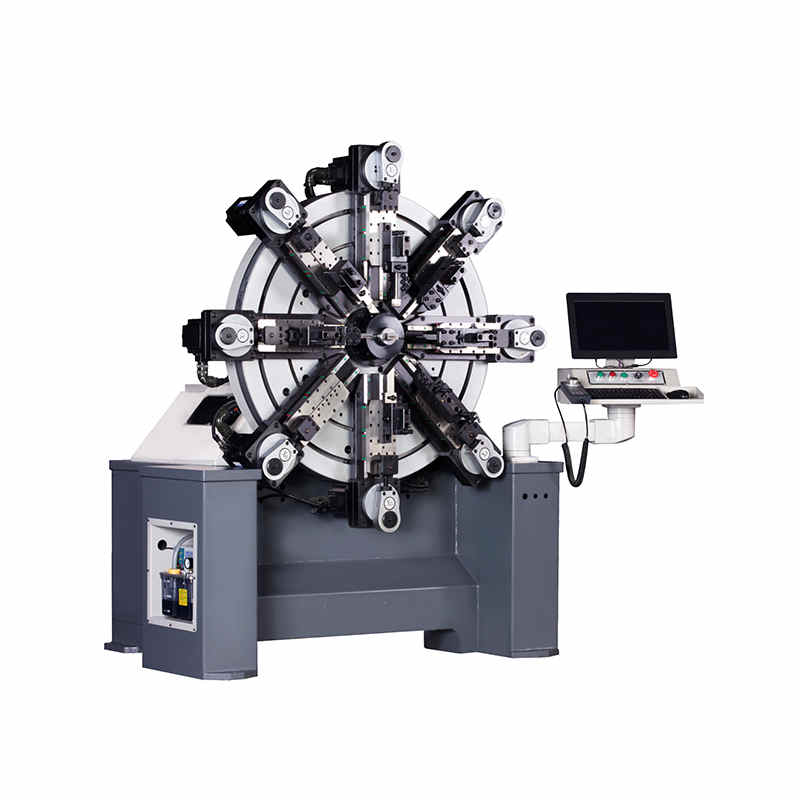To ensure accuracy and reduce defects in CNC Spring Machines, several advanced technologies and systems are typically employed. These systems work together to maintain precision, consistency, and quality throughout the spring production process. Here are some of the key technologies and systems used:
Closed-Loop Feedback Systems: These systems use sensors to monitor the position and movement of machine components in real-time. The feedback is used to make immediate adjustments to ensure that the machine operates within the specified tolerances.Servo Motors and Drives: High-precision servo motors are used to control the movement of various machine parts, such as the coiling head, wire guide, and cutting tools. Servo drives ensure smooth and accurate movements, which are essential for producing springs with tight tolerances.Optical or Magnetic Encoders: These devices are used to measure the position of the machine's axes with high accuracy. Encoders provide precise data on the rotational position of motors, allowing for fine control of wire feed and coiling operations.
CAD/CAM Integration: CNC software that integrates with CAD/CAM systems allows for precise programming of spring designs. The software can simulate the production process, identifying potential issues before actual manufacturing begins.Adaptive Control Software: This software can adjust machine parameters on the fly based on real-time data, compensating for variables such as wire tension, material properties, and machine wear to maintain accuracy.
Vision Systems: Cameras and image processing software are used to inspect springs as they are produced. These systems can detect defects such as incorrect dimensions, surface imperfections, or deformities, enabling immediate correction.

Laser Measurement Systems: Laser-based measurement systems provide non-contact inspection of spring dimensions, ensuring that each spring meets the required specifications without interrupting production.
Automatic Wire Tension Control: These systems monitor and adjust the tension of the wire as it is fed into the machine, ensuring consistent force is applied during coiling. This helps prevent variations in spring dimensions and reduces the likelihood of defects.Load Cells and Tension Sensors: Load cells and sensors measure the actual tension in the wire, feeding data back to the control system to maintain optimal tension throughout the production process.
Thermal Management Systems: Temperature variations can affect the material properties of the wire and the performance of the machine. Thermal management systems maintain a stable temperature in critical areas of the machine to ensure consistent performance.Environmental Sensors: Sensors that monitor humidity, vibration, and other environmental factors can trigger adjustments to machine settings, helping to maintain precision in varying conditions.
Condition Monitoring: Sensors monitor the condition of key machine components, predicting when maintenance is required. This helps avoid unexpected downtime and ensures the machine operates at peak precision.Vibration Analysis: Vibration sensors detect any deviations from normal operation, which could indicate issues with machine alignment or wear. Early detection allows for corrective action before it impacts product quality.Simulation Software: Operators can use simulation software to model the production process, identify potential issues, and optimize machine settings before actual production begins.Operator Training Modules: Comprehensive training programs and virtual simulations help operators understand how to maintain accuracy and reduce defects, leading to more consistent production outcomes.
These technologies and systems work together to ensure that CNC Spring Machines operate with the highest levels of accuracy and minimal defects, leading to better quality products and more efficient production processes.